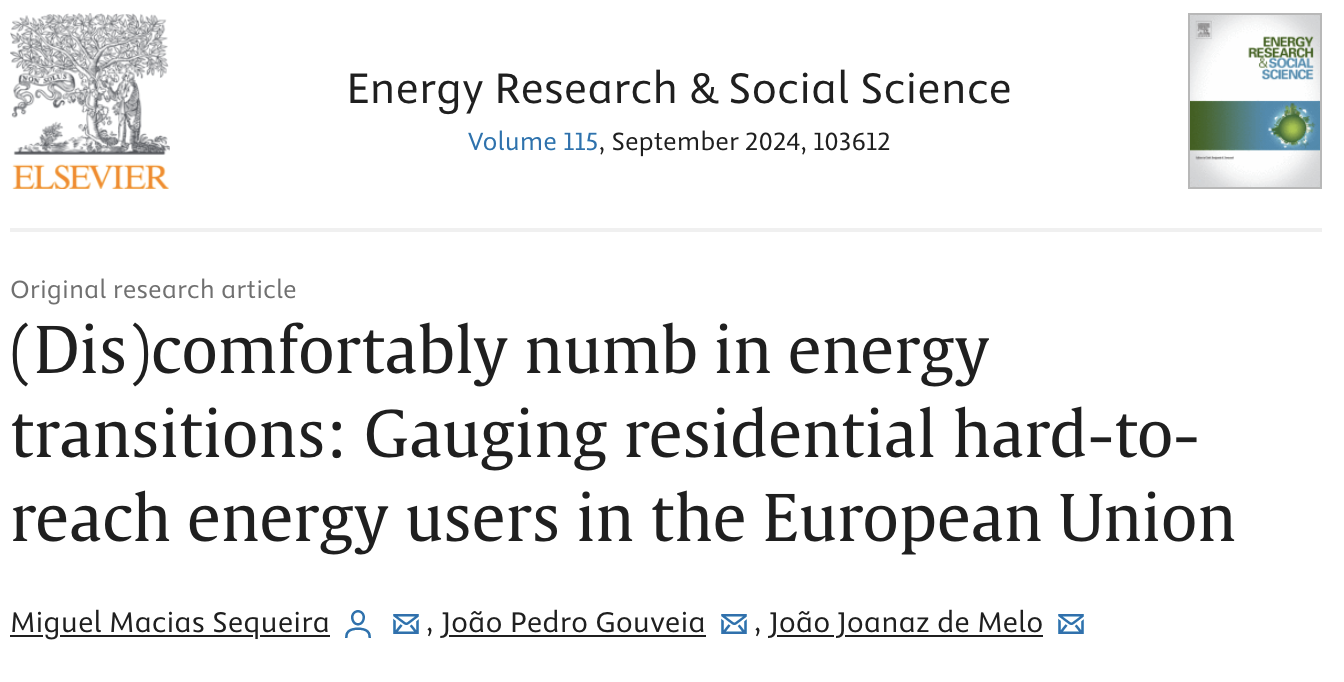
(Dis)comfortably numb in energy transitions: Gauging residential hard-to-reach energy users in the European Union [2024]

Hard-to-reach energy users – those who are difficult to reach, underserved, or hard to engage or motivate – are a vital concern for just energy transitions. Previous studies in the Global North have suggested three major residential groups, namely vulnerable households, high-income households, and tenants and landlords, for which one-size-fits-all policies have proven largely unsuccessful. Still, more research is needed to identify hard-to-reach groups and to understand households' decision-making processes. In this context, we review the literature to systematise a theoretical framework, proposing thirteen profiles for vulnerable households (low-income, low education, rural, multi-family, elderly, young, single parents, migrants, unemployed, ill-health and disabilities, ethnic minorities and indigenous groups, homeless and informal settlements, travellers and nomadic communities), two for high-income households (high-income, sumptuous spenders), and two for tenants and landlords (tenants, landlords). We select indicators to gauge these audiences in the European Union. Results suggest that a substantial share of households may be hard-to-reach, with several profiles (e.g., low-income, tenants) individually accounting for 30 % of the population. Relevant variations are found across Member States. Furthermore, a significant population share intersects at least two profiles, compounding the barriers to their engagement. These households require targeted and tailored policies and interventions to address their needs, which are broadly discussed. The hard-to-reach concept can be useful to inform policymakers and practitioners. Data gaps emerge for marginalised and wealthy groups. Heterogeneity and intersectionality add further complexity. Future research can fill these gaps while taking on multi-scalar, plural, and inclusive approaches to identify and engage hard-to-reach households.
Full publication here.